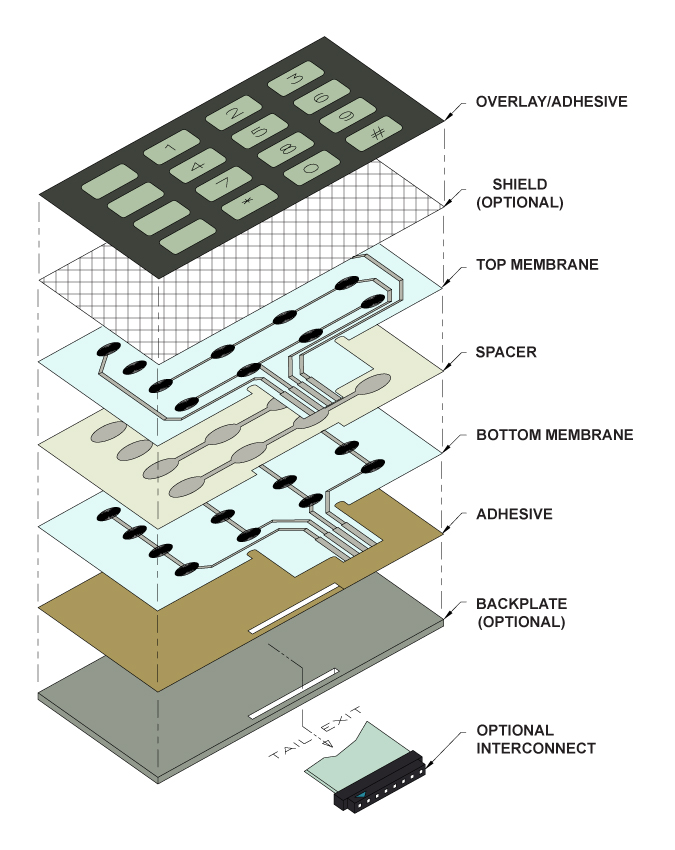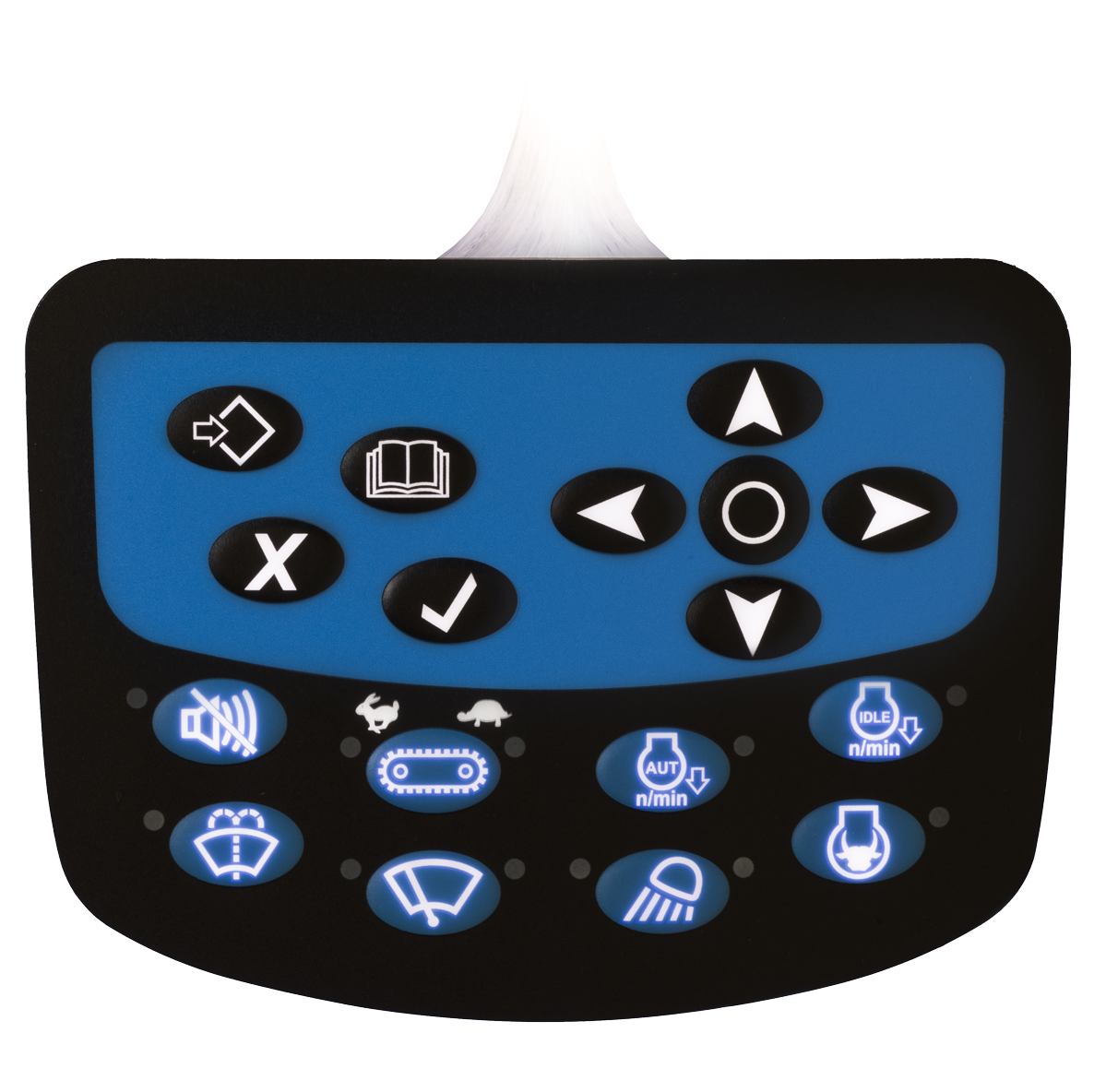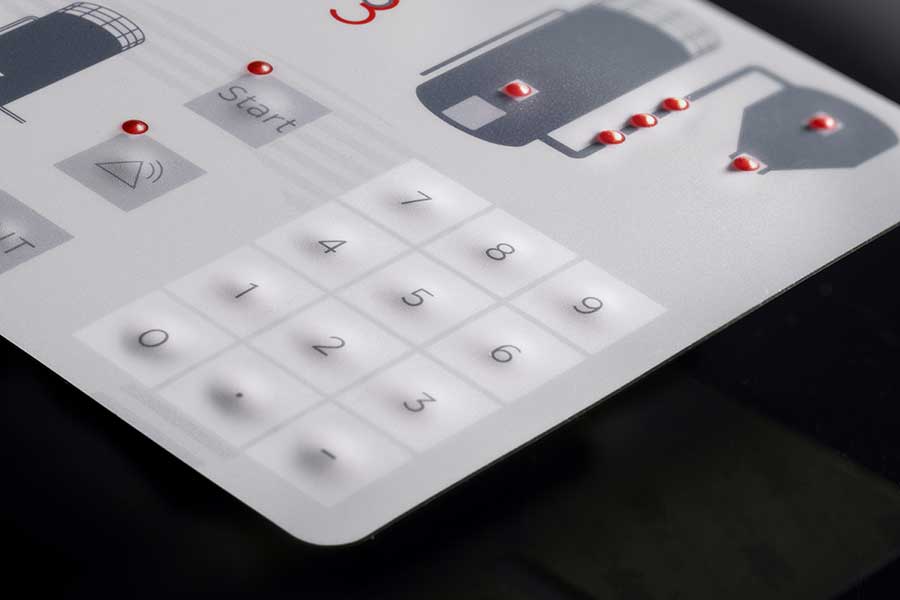Membrane Layer Switch Innovation: The Trick to Reliable and Cost-Effective Interfaces
Membrane switch technology has arised as an essential element in the style of user interfaces, giving both reliability and cost-effectiveness across a varied range of applications. As we explore the multifaceted advantages of membrane switches, their possibility for advancement raises concerns regarding future applications and advancing fads.
Understanding Membrane Layer Switch Innovation
Membrane switch innovation is a commonly used user interface option in different digital devices, offering a seamless blend of performance and style. This technology incorporates numerous layers of products, usually containing a graphic overlay, spacer layer, and a circuit layer. The graphic overlay displays the user interface aspects, while the spacer layer separates the circuit layer from the overlay till a user turns on a button.
When stress is put on the overlay, the circuit layer finishes the electrical circuit, sending out a signal to the gadget. This system enables for numerous setups, including tactile responses and backlighting options, boosting individual communication. Membrane switches are generally made utilizing sturdy materials such as polyester or polycarbonate, guaranteeing long life and resistance to ecological elements like wetness and dust.
The adaptability of membrane switches allows their application in diverse markets, including medical devices, customer electronics, and commercial controls. Their small style permits assimilation right into space-constrained atmospheres, giving a reliable user interface without compromising visual allure. Recognizing the ins and outs of membrane layer button innovation is necessary for producers and developers seeking to develop dependable and reliable human-machine user interfaces.
Secret Benefits of Membrane Switches
While various interface services exist, membrane layer switches over offer distinctive advantages that make them a favored selection in numerous applications. Among the primary advantages is their durability; membrane layer buttons are designed to stand up to rough environmental problems, including wetness, dirt, and temperature changes, making sure durable efficiency. This strength dramatically decreases the demand for constant substitutes, thereby lowering total maintenance prices.

Additionally, membrane layer buttons are light-weight and compact, making them appropriate for applications where area is restricted. Their inconspicuous style contributes to a streamlined look without endangering capability.
Cost-effectiveness is also a significant advantage, as the manufacturing process for membrane changes often tends to be cheaper compared to typical mechanical buttons. This cost, integrated with their reliability and convenience of installment, positions membrane layer changes as a practical option for a large range of industries seeking reliable and effective interface.
Applications Throughout Different Industries
Exactly how do membrane layer switches adapt to the diverse requirements of different industries? Membrane layer switch innovation is significantly identified for its flexibility, making it ideal for a wide variety of applications across several industries. In the medical area, membrane buttons are utilized in analysis tools and patient monitoring tools, where their durability and ease of cleansing are vital for keeping health requirements. The automobile industry uses these switches in control panels and control dig this board, using a streamlined aesthetic while making certain user-friendly procedure.
In consumer electronics, membrane switches offer a compact remedy for push-button controls and home appliances, improving individual experience through intuitive style. Additionally, the industrial industry leverages membrane layer switches for machinery control board, taking advantage of their resistance to severe environments, such as wetness and dirt.
Military and aerospace applications likewise utilize membrane switches for their reliability and ability to stand up to severe conditions, ensuring functional performance in critical situations. The food and beverage market adopts these buttons for automated systems, where sanitation and convenience of procedure are extremely important (membrane switch). Inevitably, membrane layer buttons are customized to meet the one-of-a-kind demands like this of each industry, proving their crucial duty in modern-day innovation interfaces
Layout and Customization Alternatives

In the realm of membrane button technology, style and modification choices play a pivotal function in improving performance and individual interaction. These buttons can be tailored to satisfy specific functional demands and aesthetic choices, making them versatile parts in different applications.
One of the main customization options is the format of the button itself, which can be made to accommodate one-of-a-kind customer interfaces and ergonomic considerations. By adjusting the form, size, and setup of buttons, manufacturers can produce instinctive designs that facilitate ease of use. Furthermore, the consolidation of various shades and visuals overlays enables branding and boosted visibility, making sure that customers can swiftly determine features.
In addition, membrane buttons can be engineered with various tactile comments devices, such as raised buttons or audible clicks, to boost the individual experience. Different materials can additionally be selected for sturdiness and ecological resistance, dealing with elements such as dampness, temperature fluctuations, and chemical exposure.
Eventually, the comprehensive design and customization choices offered in membrane switch technology equip organizations to create customized services that not only meet functional demands however additionally line up with their branding and functional demands.

Future Fads in Membrane Switches
As membrane button technology remains to advance, future fads are progressively concentrated on enhancing individual experience and integrating innovative capabilities. One considerable pattern is the combination of touch-sensitive and capacitive technologies right into standard membrane switches. This advancement permits even more user-friendly interface, offering tactile comments while preserving a streamlined layout.
One more emerging trend is making use of eco-friendly products, driven by the expanding demand for visite site sustainable manufacturing techniques. Producers are looking for to reduce their carbon impact by making use of recyclable substratums and low-impact inks, lining up with global sustainability objectives.
In addition, the surge of the Net of Points (IoT) is prompting the consolidation of clever functions into membrane layer switches. Enhanced connectivity alternatives will make it possible for tools to interact with each other, permitting seamless integration into broader systems.
In addition, developments in printing innovations, such as electronic printing, are enabling for greater layout versatility and personalization. This makes it possible for manufacturers to create complex layouts and lively shades cost-effectively.

Verdict
To conclude, membrane layer button modern technology stands for a crucial technology in customer interface design, providing substantial benefits in longevity, modification, and cost-effectiveness. Its prevalent applicability across diverse industries highlights its relevance in modern technology. As improvements remain to emerge, especially in touch-sensitive user interfaces and sustainable materials, the capacity for membrane changes to boost user experience and capability continues to be appealing. Proceeded expedition of this innovation will likely yield even more renovations and expand its scope in future applications.